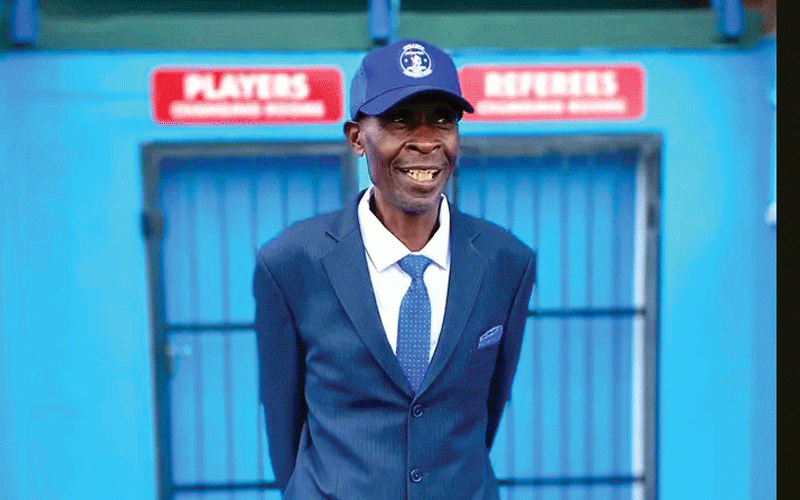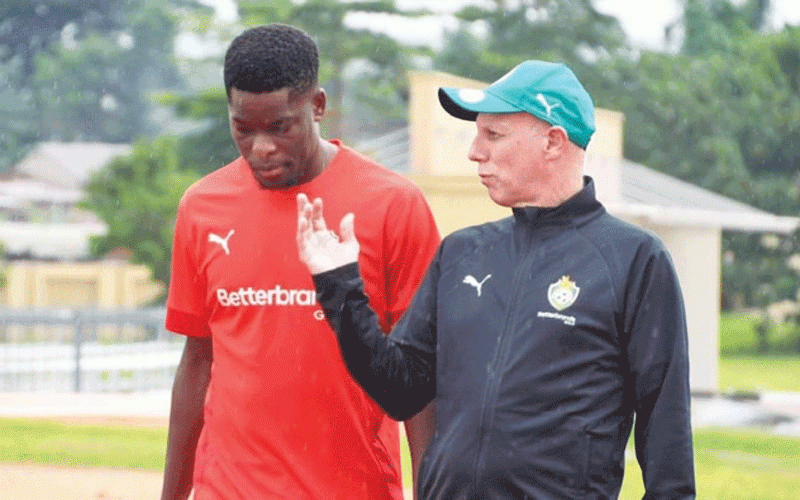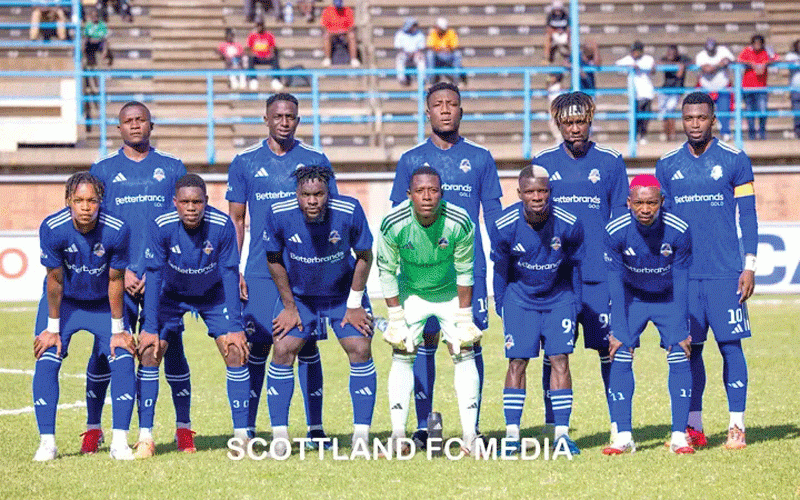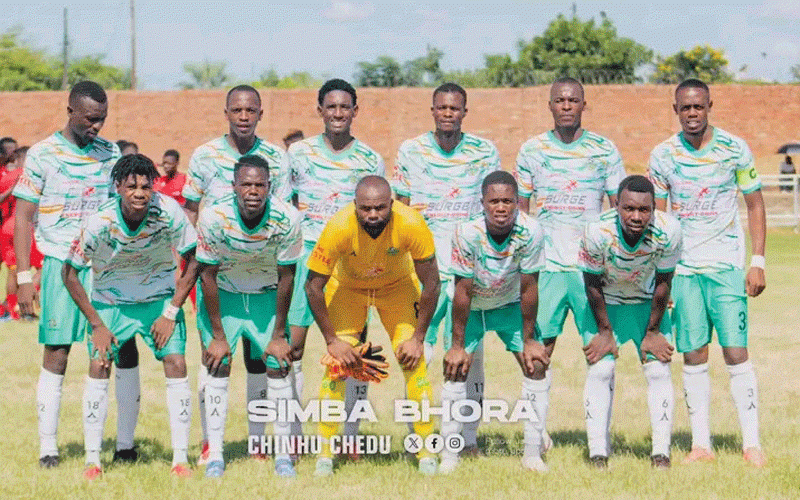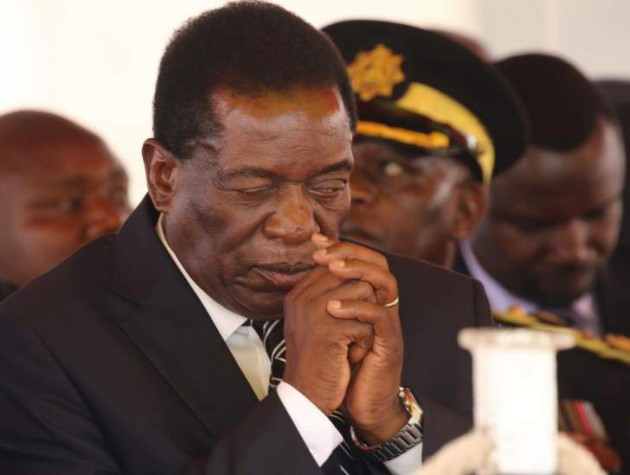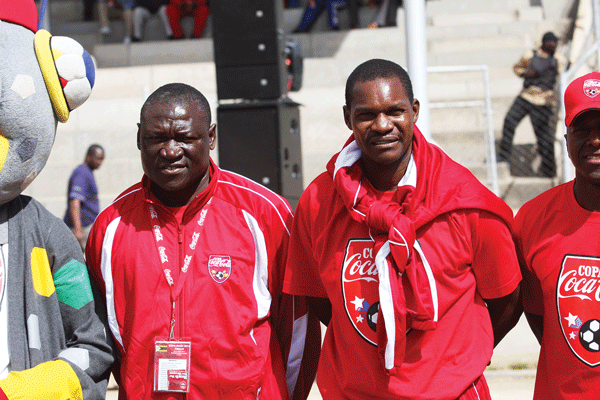
One of the country’s most capped Zimbabwe Warriors player John Phiri, popularly known as JP, has an interesting football story.
yesteryear profile with MUNYARADZI MADZOKERE

The talented midfielder grew up in Rio Tinto — Zimbabwe’s Cam and Motor compound in Kadoma — and rose to become one of the finest defenders to play for the national team, a legend in his own right.
Phiri, a former Rio Tinto, State House Tornadoes and Darryn Textiles star, was an ever-present feature in the Zimbabwe national team for close to two decades in the 80s and 90s.
At 31, he made a move to play football in Europe when he signed for Polish side Miliarder Pniewy, having missed a chance to sign for the European giants, English side Nottingham Forest, then coached by the revered Brian Clough when he was 22.
Debate on whether he is the most capped player to have played for Zimbabwe rages on, with official statistic suggesting that with 94 caps, he has four less that former Coventry City star Peter Ndlovu.
Standardsport caught up with the man who was Zifa board member development with the Cuthbert Dube-led administration.
“How I became a defender is a story on its own. I was playing in the midfield as a youngster for Rio Tinto. I don’t know what John Rugg, the coach who had spotted me as a 13-year-old, had in mind when he took interest in my footballing skills.
- Chamisa under fire over US$120K donation
- Mavhunga puts DeMbare into Chibuku quarterfinals
- Pension funds bet on Cabora Bassa oilfields
- Councils defy govt fire tender directive
Keep Reading
“But one day veteran central defender Gibson Sibanda got injured and the coach sent me in to replace him and ever since that day, I was a defender. I never enjoyed playing as a defender because the midfield was busier and you got to do all those fancy skills, but then I flourished as a defender,” Phiri recalled.
Son of former Rhodesia select striker July Phiri, JP began his career with the then local football giants Rio Tinto’s Under-13s, which later became Eiffel Flats in the mid-70s.
Rio Tinto had already produced a host of national team players such as Robert Godoka, Joseph Zulu, Ephert Lungu, Gibson Sibanda, Wonder Phiri, Stanley Nyika and goalkeeper Raphael Phiri.
At Independence in 1980 Phiri, who was then 18, was already part of the national Under-20 team coached by Mick Poole, rubbing shoulders with the likes of Joel Shambo, David Mwanza, Stanley Ndunduma, Eddie Katsvere and James Takavada among others.
With his club coach Rugg being in charge of the national team, it fast-tracked young Phiri’s flirtation with the national team.
“I was part of [Mick] Poole’s star-studded Under-20 team at Independence and we would be invited to train with or watch the national team play. Rugg would also invite about three juniors, usually Ephraim Dzimbiri, Stanley Ndunduma and me, to train with the senior team regularly ahead of big matches until a time they drafted us into the senior team permanently,” Phiri said.
Born on May 3 1962, Phiri reckons he earned his first senior cap in 1982 playing against Malawi and thereafter rarely missed any Warriors matches until the mid-90s.
Official figures suggest that he played 94 matches, four behind Ndlovu with 100, but he believes he played a lot more matches.
“When I made my debut in around 1982, I never stopped playing for the national team until 1997, so I think I am the most capped player. At one time when we made the count I had a total of 118 caps, but the 11 Cecafa matches were deducted because they were not recognised by Fifa and that should leave me with at least 107 appearances,” he said.
By the time he moved from Eiffel Flats to State House Tornadoes owned by the late former president Canaan Banana in 1983, he had already established himself as a top defender in the country.
Banana used his contacts to organise an attachment for Phiri at Nottingham Forest for a couple of months, but when the English side showed interest in engaging the services of the player, Banana slammed the door shut.
“Those days I could have gone to England to play for Nottingham Forest, then coached by the legendary Clough. I went there for attachment after club owner Banana used his contacts.
“During that time of the attachment they showed interest in me going to play for them, but then they were not trials, but just attachments. When the news came that Nottingham were interested in me, Banana would have none of it because he wanted us to win the league here in Zimbabwe,” recalled Phiri
The local league title, however, never came for State House Tornadoes, a club which later became Darryn Tornadoes. But the former Mudamombe Secondary School pupil would get his chance to play in Europe, albeit at the twilight of his career.
“In 1993, together with Norman Mapeza, I moved to Poland to a team called Miliarder Pniewy and I was 31 at that time. It was an amazing experience because I always wanted to go to Europe and test myself against some of the top European players. And today if I go to Poland, they see me as a club legend at Milliarder,” he said.
After spending two and a half years in the polish league, Phiri wound up his career at Cape Town Spurs in South Africa where he spent two years until 1997.
A career spanning 18 years sadly did not yield any league championship medal, apart from two Rose Bowl and one Chibuku Cup triumphs with Rio Tinto as well as a Castle Cup winners medals with Darryn T.
Inspired by 1983 Soccer Star of the year Lungu, Phiri believes he did enough to eclipse his idol.
However, he rates Peter Ndlovu as the best player he ever played with during his career.
“I played with some very good players like Moses Chunga, Stanford Mtiwa, Joel Shambo, David Mwanza and the like, but among them all, the best was Peter Ndlovu. I saw what he did and I played with him and felt what he could do when I played against him.
“It was not a joke that he made it into the Coventry City team at that time and made headlines. The English media taunted him as the new George Best and Best was being classified in the category of the likes of Pele and Diego Maradona, shows that he [Ndlovu] was very good,” the 54-year-old legend said.
After he retired Phiri left football to concentrate on his business in Budiriro, which struggled under the country’s economic meltdown at the turn of the new millennium. He then turned to printing business.
His appointment as Zifa board member development in 2014 was in fact Phiri’s first official involvement with football since he hung his boots.
He spoke about the experience.
“People want to point at the mistakes made by the Cuthbert Dube-led board, [but] there is also some good that one did. If you look at it, the girls who qualified for Rio de Janeiro, Brazil, it was Dube. This Gabon Afcon campaign which was a success, the Dube administration set it into motion, qualifying for Chan twice and making the final the other time, it was the same administration,” Phiri said.
Given another opportunity, Phiri said he would want to be involved in football development, which he says is non-existent in the country.
He hopes the younger of his two sons, Joel, who is currently at Prince Edward High School will carry forward his football legacy. The oldest son, July, preferred rugby and athletics despite his obvious talent in football. He is now into music.

